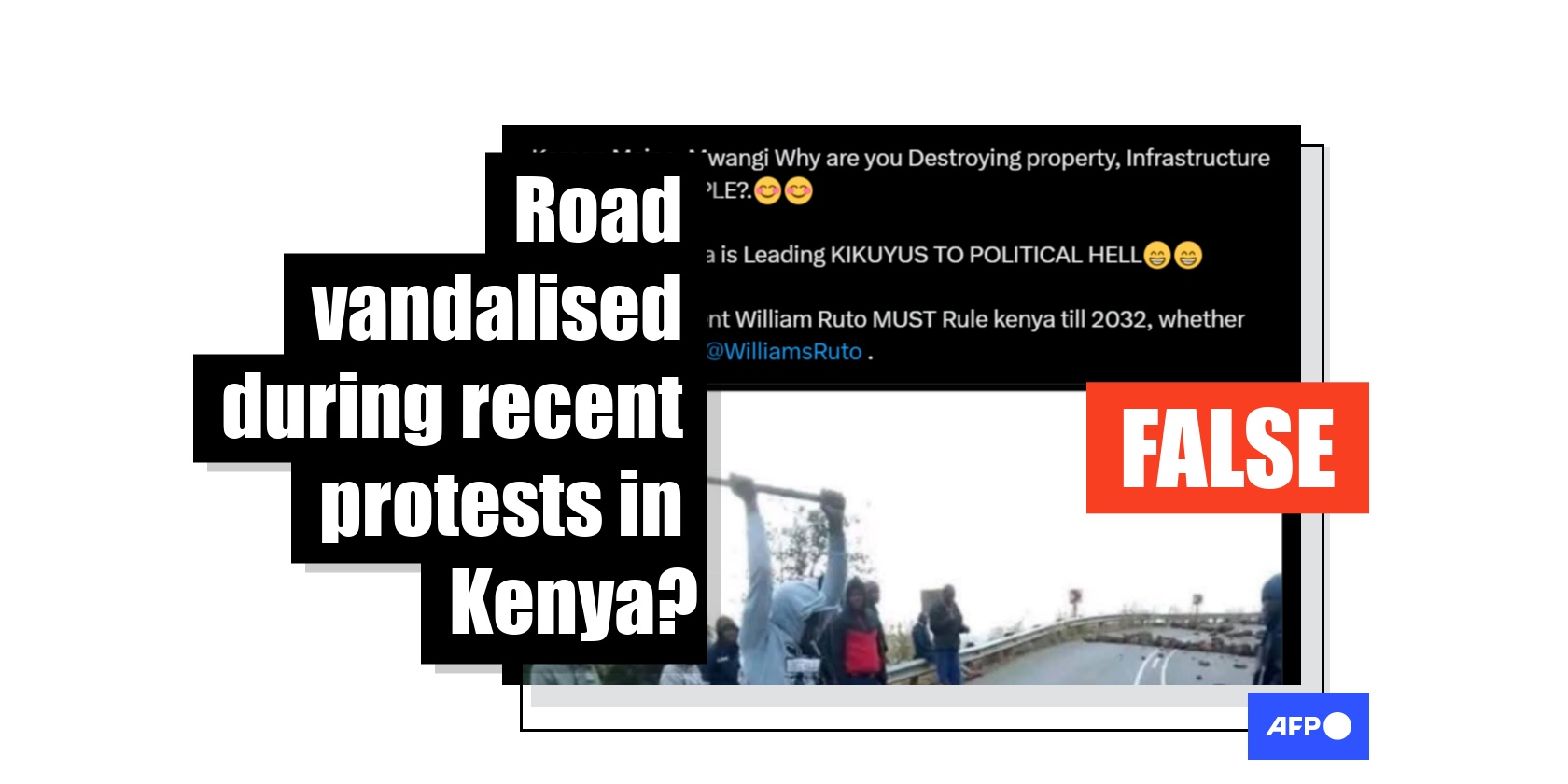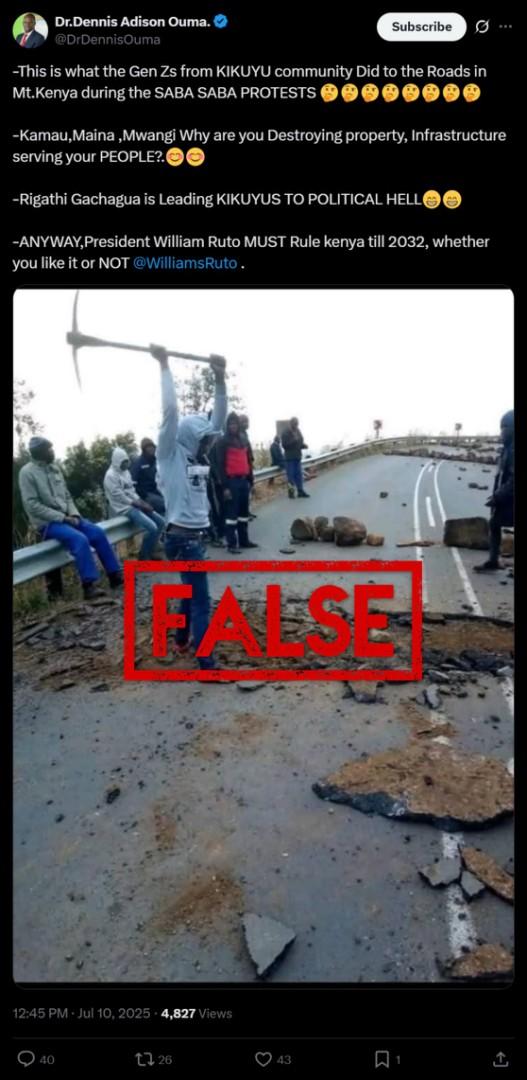
Image of protesters damaging road is from South Africa, not Kenya
- Published on July 16, 2025 at 11:46
- Updated on July 18, 2025 at 12:30
- 2 min read
- By Peris GACHAHI, AFP Kenya
“This is what the Gen Zs from KIKUYU community Did to the Roads in Mt.Kenya during the SABA SABA PROTESTS. Kamau, Maina, Mwangi Why are you Destroying property, Infrastructure serving your PEOPLE? (sic),” reads an X post published on July 10, 2025.
“Rigathi Gachagua is Leading KIKUYUS TO POLITICAL HELL. ANYWAY, President William Ruto MUST Rule kenya till 2032, whether you like it or NOT (sic),” the post adds.

Kamau, Maina and Mwangi are common names from Kenya’s largest tribe, the Agikuyu/Kikuyu, while Gachagua, who hails from the community, is Kenya’s ex-deputy president who was impeached last year after falling out with President William Ruto.
The image shows several people, one with a pickaxe raised, gathered on a section of a damaged road.
Similar claims were published elsewhere on X here and here.
Saba Saba aftermath
July 7, 2025, marked 35 years since Kenya's historic “Saba Saba” (Swahili for “Seven Seven”) protests for multi-party democracy, which subsequently led to the 1991 repeal of Section 2A of the Kenyan Constitution which had enshrined Kenya as a one-party state (archived here).
At the time, the protests descended into violence, resulting in multiple injuries, deaths and over 1,000 arrests.
This year’s Saba Saba anniversary commemoration saw nationwide protests, marked by a violent police response, looting and destruction (archived here and here).
In response to the protests, Ruto claimed that the opposition was attempting to “overthrow” his government through “unconstitutional means” and vowed firm action against the alleged “coup plotters” (archived here).
Gachagua, now Ruto’s rival, in turn accused the government of orchestrating violence and economic sabotage during the protests, claiming goons were sponsored by the state to cause chaos and then blame it on the Kikuyu community (archived here).
However, social media posts with an image purportedly showing a road vandalised by youth during the recent protests are false.
South African road
AFP Fact Check conducted reverse image searches and found that the image was taken in South Africa on September 22, 2020.
South African media reports featuring the image identified the damaged road as a section of KwaZulu-Natal's R33, located between the towns of Pomeroy and Dundee (archived here, here and here).
According to the reports, residents of Msinga local municipality destroyed the road during service delivery protests.
In a Facebook post dated September 23, 2020, the provincial transport department also published the image and condemned the vandalism (archived here).
“MEC Ntuli condemned the destruction of infrastructure and malicious damage to property after members of the community blocked the R33 and dug up the road in protest yesterday,” reads the post.
Government representatives subsequently visited the site in Pomeroy two days later (archived here).
AFP Fact Check has previously debunked claims linking the same image to supporters of a Kenyan member of parliament. On this occasion, the KwaZulu-Natal transport department confirmed that it indeed showed the R33 at Pomeroy.
Corrects June to July in the first and seventh paragraphsJuly 18, 2025 Corrects June to July in the first and seventh paragraphs
Copyright © AFP 2017-2025. Any commercial use of this content requires a subscription. Click here to find out more.
Is there content that you would like AFP to fact-check? Get in touch.
Contact us
